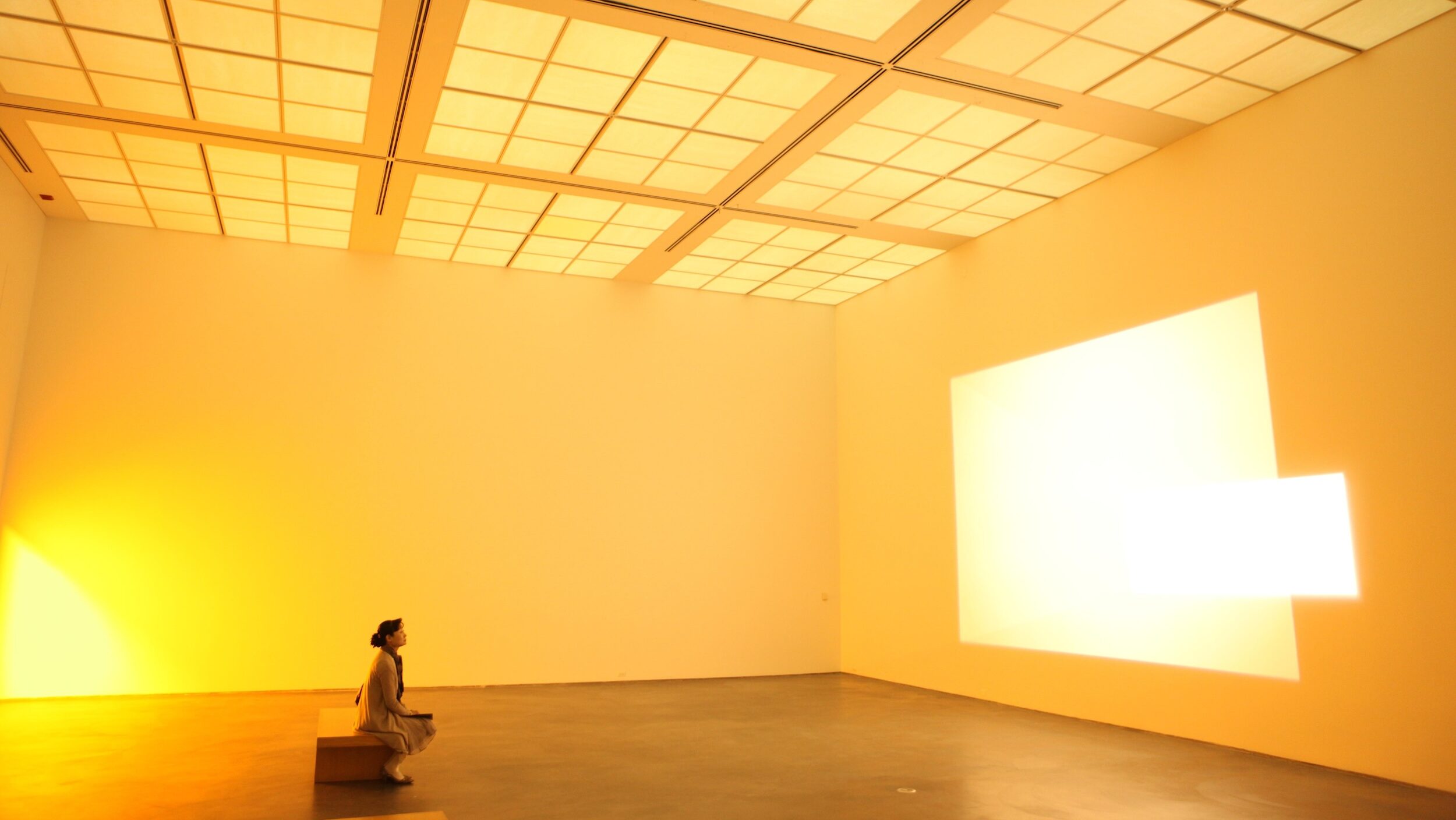In Take your time, Olafur Eliasson turns simple mechanisms into perceptual triggers. His work invites viewers to slow down and reimagine the boundaries between nature, culture, and self, one sensory shift at a time. Photo: MCA Chicago
Calm Matters is a design research project exploring how material practices can inform more present, attentive, and calming digital experiences.
Sector: Art & Research, Interaction Design, Experience Design
Collaborators: Developed in collaboration with the Faculty of Fine Arts at the Polytechnic University of Valencia
Duration: 2 years
Exploring how material practices can shape digital design toward presence, attention, and inner calm.
Design today is addicted to stimulation. Every swipe, ping, and nudge demands attention, yet so little of it nourishes presence.
Calm Matters is a long-term investigation into how we might reclaim experience design as a practice of care: one that supports not just usability, but stillness, attention, and well-being.
The work advocates for intentionality and attentiveness to the materiality of digital experiences.
At the heart of this project is a belief that matter matters. That the materials we use, and the ways we shape them, deeply affect how users feel, think, and engage.
This isn’t just about choosing the right interface. It’s about crafting meaningful experiences that invite calm, focus, and joy.
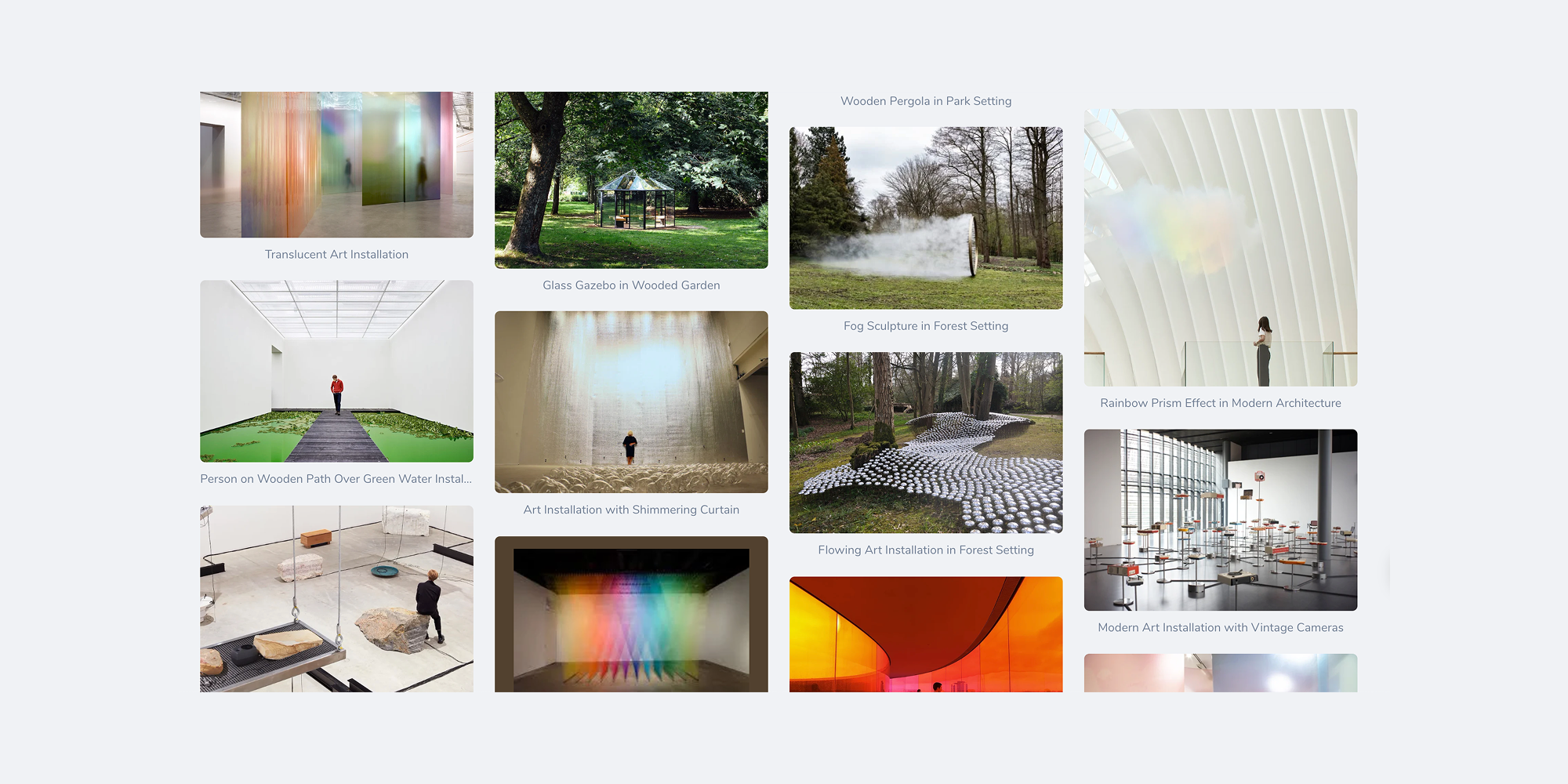
A SELECTION OF CONTEMPORARY artworks THTA EXPLORES MATERIALITIED IN DIFFERNET WAYS. Screenshot from the MyMind app
By integrating materiality and attention management, this project creates a repertoire of material strategies that encourage users to experience more presence with less distraction.
Reframing Interaction Through Material Practices
Calm Matters is a design research project exploring how material practices can inform more present, attentive, and calming digital experiences.
In a culture obsessed with speed and engagement, calm is a design choice.
Or more precisely, a series of small, situated, material decisions that shape how a user feels, thinks, and inhabits the present moment.
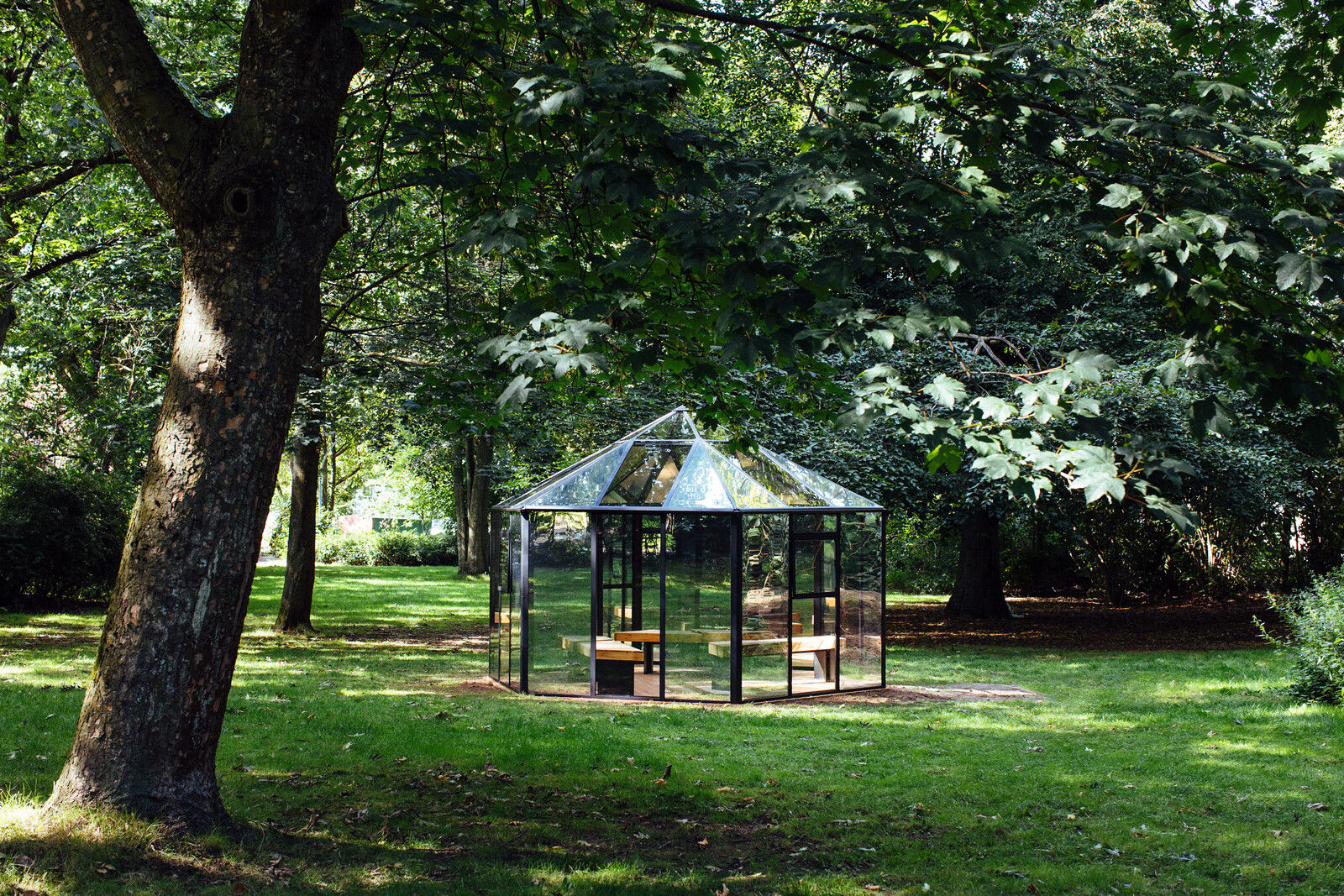
Camille Norment’s Glass Pavilion Marl stands quietly within Sculpture Park Marl, a transparent structure that blurs boundaries between inside and out. Purpose-built for this site, it offers a contemplative space where architecture, sound, and landscape merge. Photo: Bozica Babic.
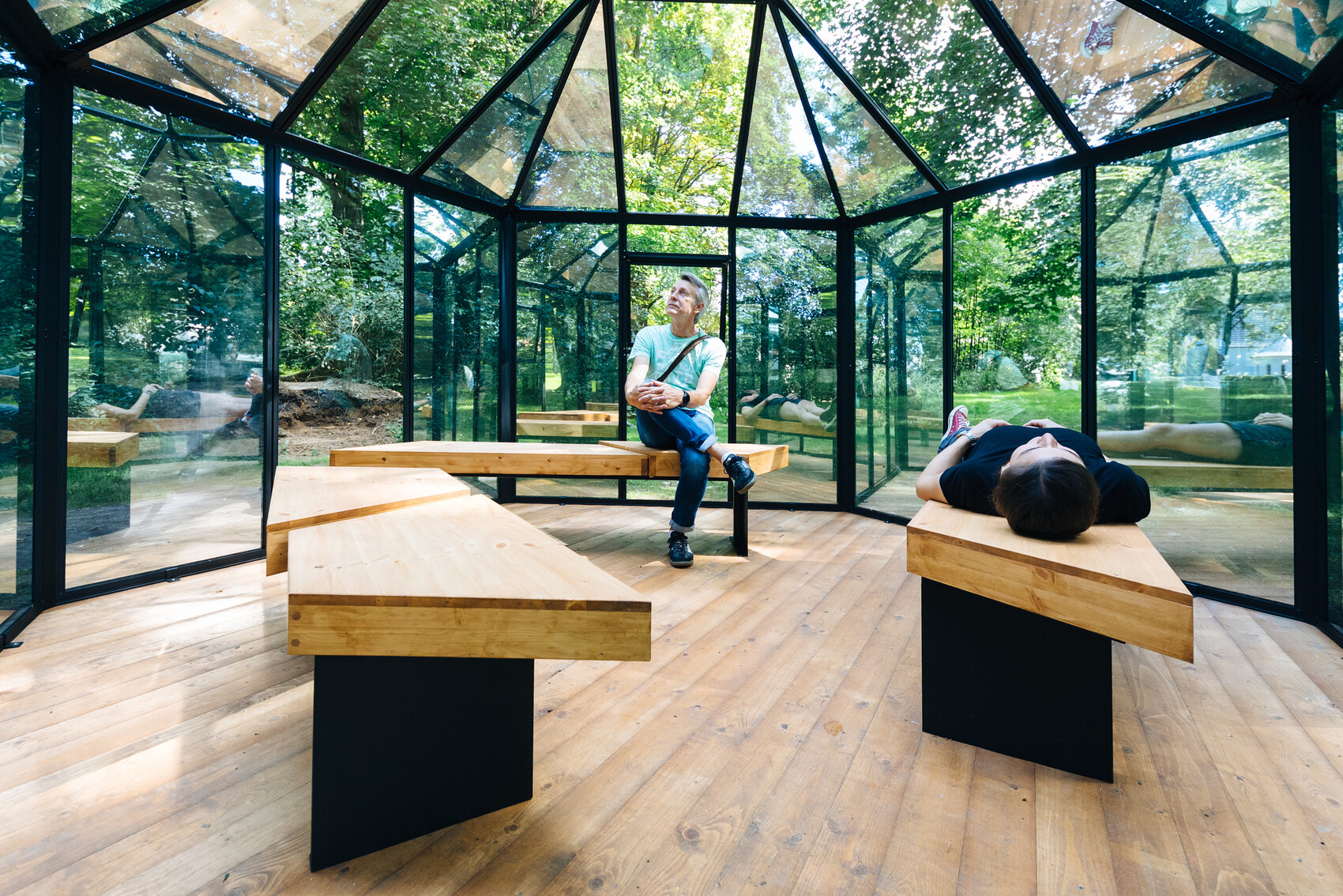
Inside Glass Pavilion Marl, a polyphonic voice composition unfolds in layered tones. The glass walls let in the world, but the sound invites you inward—a subtle suspension of time, where listening becomes a deeply spatial experience. Photo: Bozica Babic.
Born from Audrey Lingstuyl’s doctoral research, the project began with a set of deceptively simple questions:
- What can digital design learn from the slowness, care, and attention of material art practices?
- What if we designed not to capture attention, but to set it free?
- Can interaction design stop overwhelming the senses, and start supporting cognitive well-being?
- Might materiality and sensory design help us build technologies that respect attention rather than hijack it?
This research draws from contemporary art, sensory studies, mindfulness, and critical HCI to develop a new perspective on digital experience design.
It’s not about replacing existing methods. It’s about reimagining design from the inside out, from material to mind.

Pollinator Pathmaker Garden at Eden Project Cornwall by Alexandra Daisy Ginsberg. Here, the algorithm’s logic becomes living matter. Ginsberg’s garden is more than a habitat. it’s a sculptural field of co-evolved forms, each chosen not for human delight but for how it feels, smells, and shines in ultraviolet to a bee or a butterfly. Materiality unfolds through petals, pollen, and presence. Photo: Royston Hunt
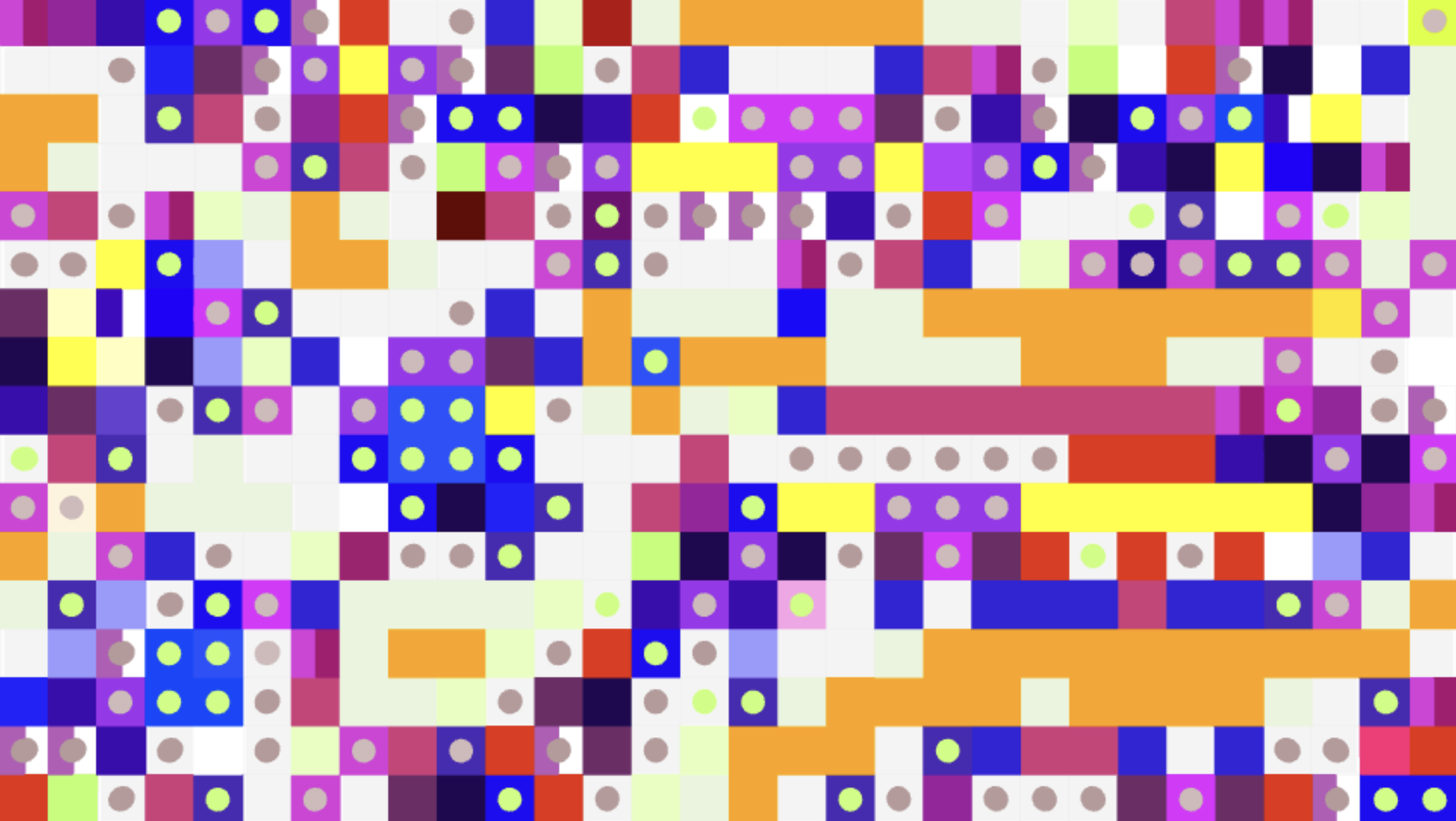
Planting Plan Created by the Pollinator Pathmaker Algorithm. Ginsberg uses code as a material, shaping a visual language attuned to insect perception. This planting plan, generated by her empathy-driven algorithm, transforms data into form, colors, textures, and bloom rhythms mapped from the sensory worlds of pollinators. It’s a blueprint where materiality begins in logic but blossoms in soil.
The Calm Design Approach
By analyzing a set of contemporary artworks and drawing from:
- Practice-based research
- Contemporary art and craft
- Design studies and critical HCI
- Mindfulness and cognitive science
we developed The Calm Design Approach, a method that reveals how specific design decisions shape users’ inner experiences, particularly in relation to overwhelm, calm, attentional spaciousness, and relational quality.
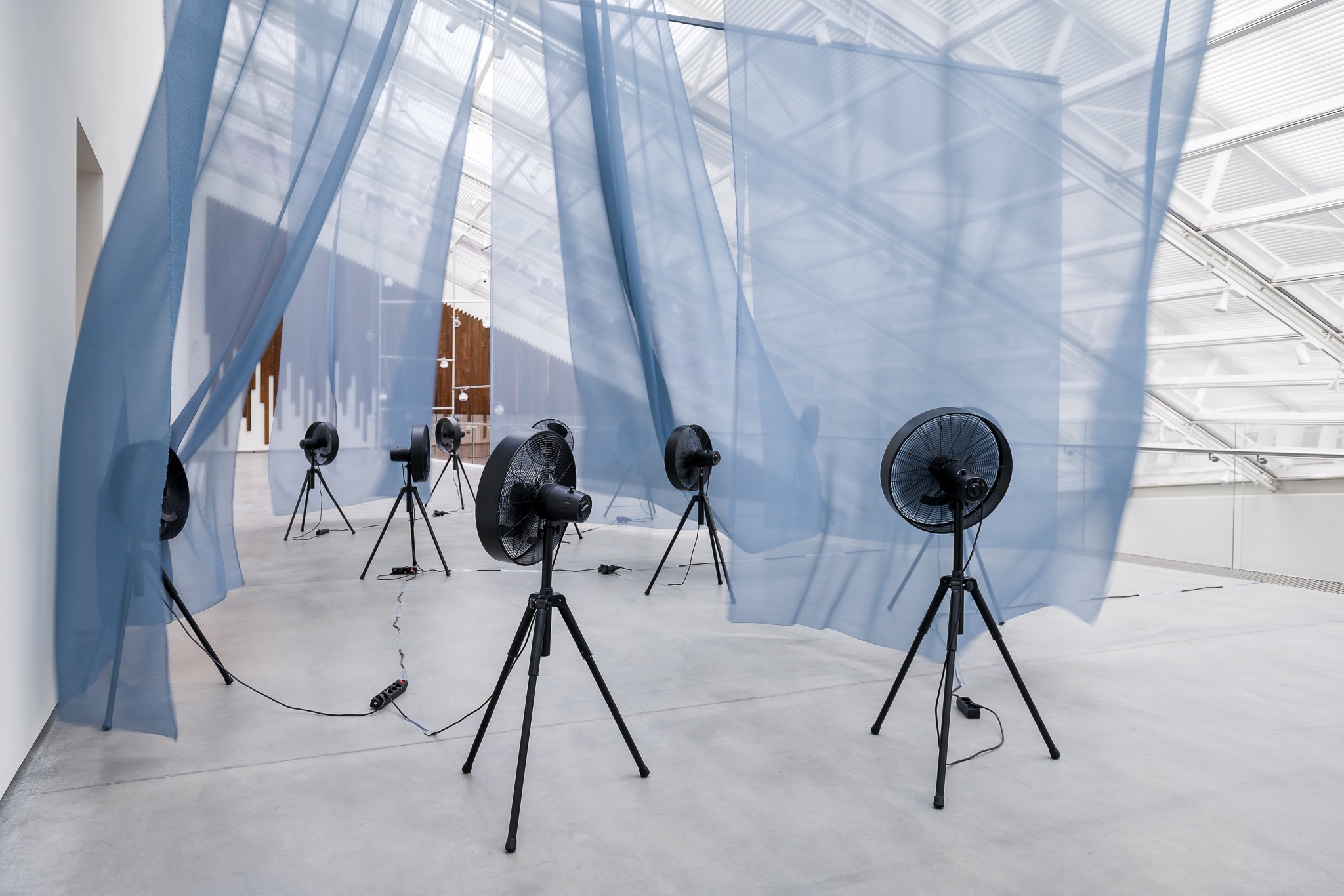
Smell becomes matter in RE________, where Sissel Tolaas transforms invisible molecules into material for thought. With over 10,000 archived compounds and a growing lexicon of 4,200 terms, she crafts immersive installations that speak through the chemistry of air—inviting visitors to breathe, feel, and remember. Photo: Christian Øen.
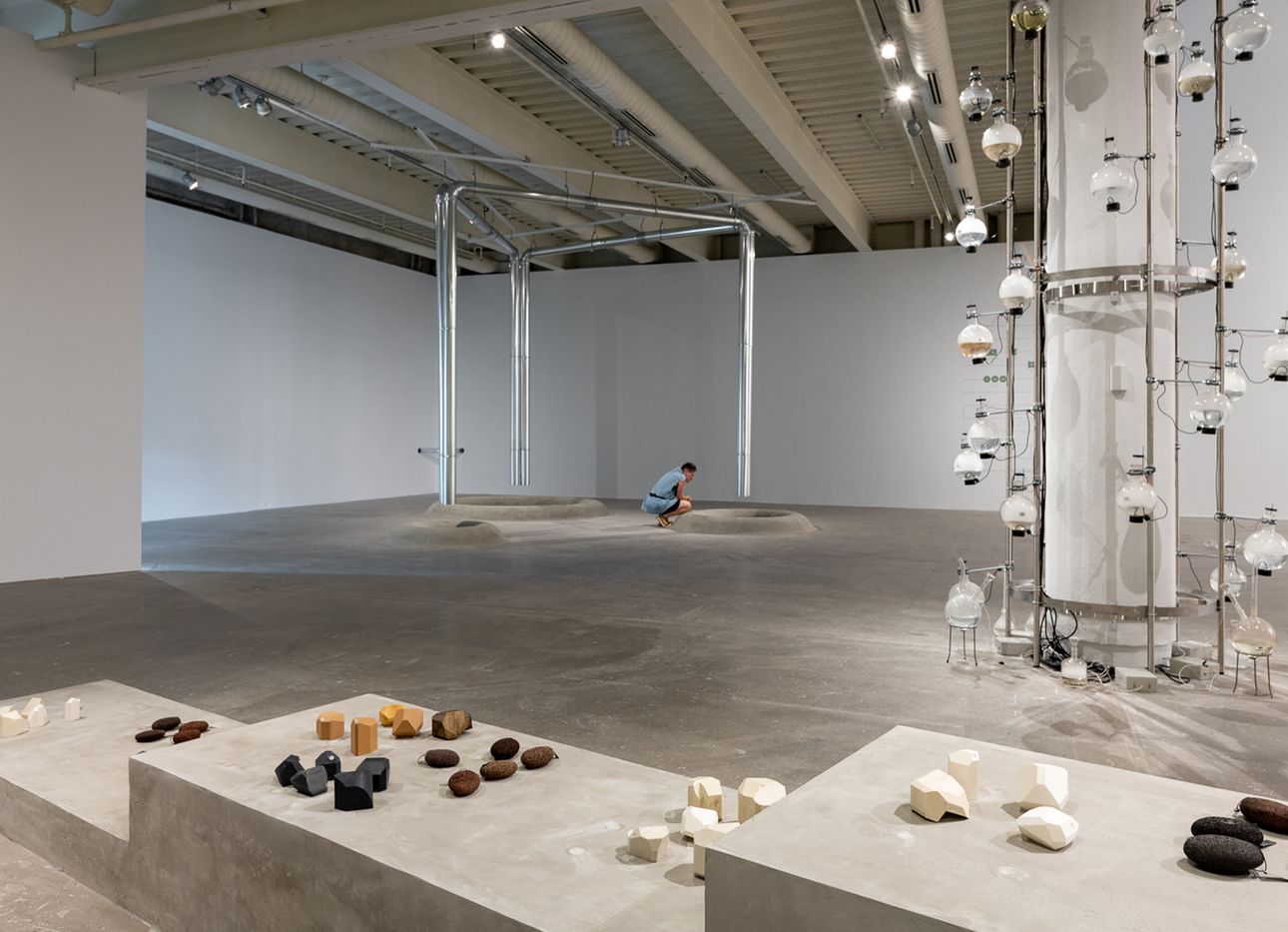
Inside RE________ at ICA Philadelphia, scent becomes sculpture and laboratory becomes poetry. Sissel Tolaas treats smell as both material and message, distilling complex social questions into molecules, vapors, and coded forms. With no wall texts to guide the experience, visitors navigate bubbling flasks, cryptic diagrams, and scent-laced objects by intuition alone, prompted to trust their senses and rethink how memory, identity, and power are carried on the air. PHOTO: the ICA.
Rather than offering a rigid framework, the approach proposes a way of seeing—a material lens through which to reimagine how we design.
From this, seven recurring design practices emerged:
Expanded Materiality
Materiality includes not just physical matter but also ephemeral elements: light, sound, temperature, time, and even data. These immaterial forces can shape some of the most resonant user experiences.
Algorithmic Materiality
Digital systems can give intangible elements a kind of weight. Algorithms can modulate light, rhythm, behavior, and movement in ways that feel tactile and immersive
Nature-Inspired Thinking
Nature never designs in silos. It adapts, blends, and co-evolves. Drawing from natural systems encourages more organic, interconnected design practices
Context Awareness
Design should emerge from its surroundings. Use real environments, not abstractions, to shape interactions that feel intuitive, situated, and emotionally attuned.
Multi-Sensory Engagement
Digital design often privileges vision. But other senses offer quieter, richer modes of connection. Create experiences that invite listening, touching, sensing, moving—and let attention flow across them
Space as Interface
The body is part of the interaction. Calm often arises when we feel grounded in space. Treat spatiality as a design material—one that invites movement, rhythm, and pause
Interaction Craftsmanship
Like a sculptor shaping clay, design interactions with care, patience, and intent. Local knowledge and handmade qualities matter. They foster connection and meaning.
Calm Design in Practice
The Calm Design Approach shifts the focus from capturing attention to fostering meaningful, mindful interactions in an overstimulated digital world.
1.
Beyond Screens
Calm Design expands the canvas of interaction. It weaves together physical textures, light, sound, rhythm, and spatiality to shape experiences that are deeply embodied, not just clicked or swiped.
2.
Expanding Materiality
Materiality becomes multidimensional: physical, intangible, environmental, cultural, and computational. Calm Design repositions materials not as tools, but as co-creators of experience. Even code can shape sensorial texture.
3.
Context Awareness
Design grounded in context is less invasive and more intuitive. Whether it’s ambient light, acoustics, cultural cues, or environmental feedback, design should emerge from, not override, the world.
4.
Embodied Interaction
This is not just about reducing distraction. It’s about designing for wholeness. Calm Design fosters presence through bodily experience, engaging multiple senses and honoring the user’s rhythm and movement.
5.
Nature-Inspired
Calm Design learns from nature’s ability to build systems of mutual care. Instead of isolated solutions, it favors ecosystems: designs that are adaptive, layered, and symbiotic.
6.
Thoughtful Friction
Friction isn’t always the enemy. When used intentionally, it fosters reflection, slowness, and mindful engagement. The goal is not seamlessness, but meaningfulness.
7.
Design Craftsmanship
Calm requires care. Designers are not just problem-solvers, but stewards of attention. By cultivating craftsmanship and collaborating across disciplines, we can create technologies that feel intentional, respectful, and human.
The Calm Design Matrix
As part of this inquiry, we developed the Calm Design Matrix, a tool to map and audit digital experiences through the lens of calm.
Informed by semiotics, interaction theory, and calm design principles, the matrix includes over 90 criteria across seven dimensions:
- Relational
- Organizational
- Sensory
- Formal
- Interactive
- Usability
- Calm
The matrix is not a scoring system. It doesn’t evaluate or optimize. Instead, it helps designers identify subtle cues and hidden loops—those that either foster calm or disrupt it.
It’s a tool for:
- Design researchers focused on attention and experience quality
- Practitioners exploring mindful or ethical UX
- Anyone rethinking interaction as more than utility
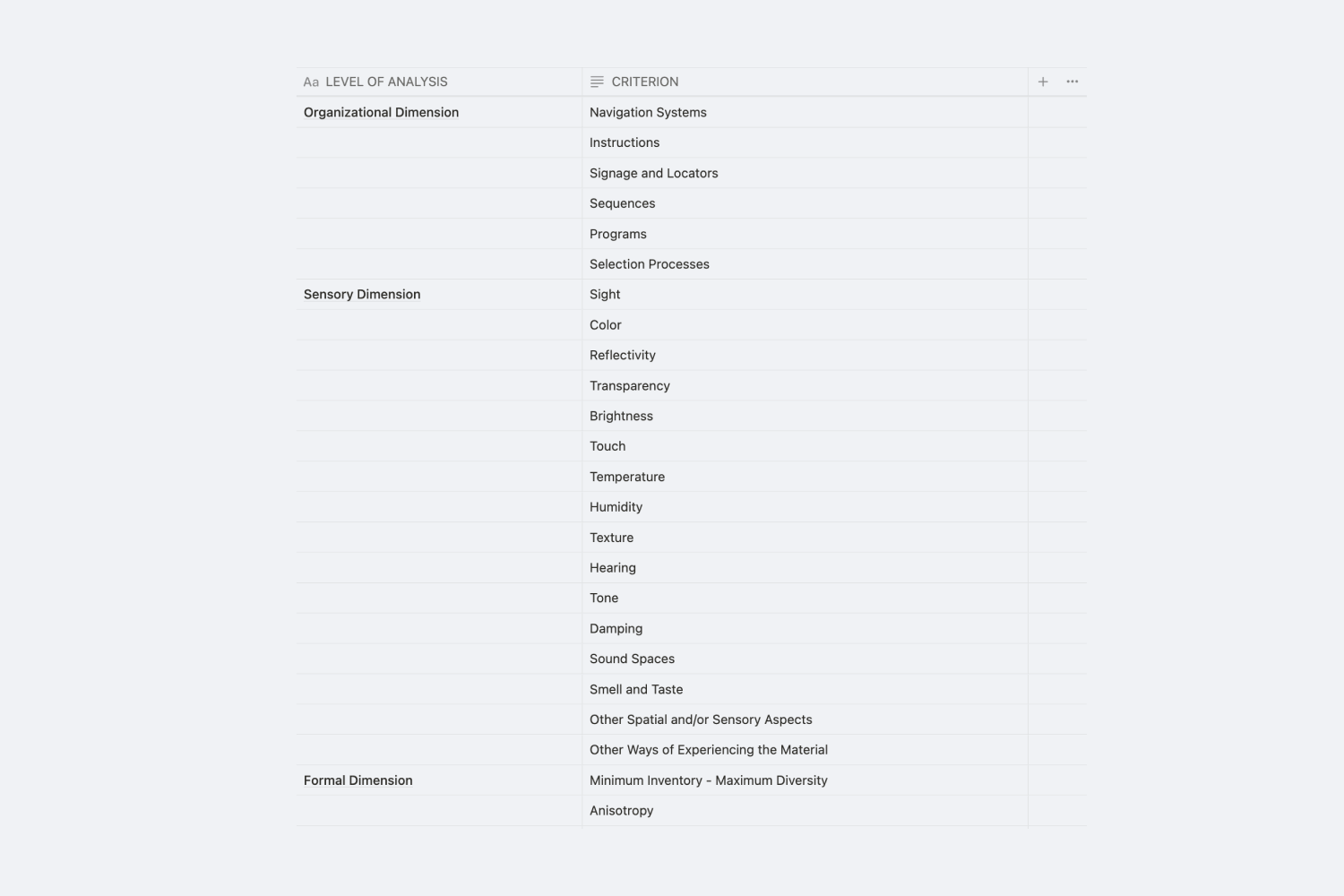
Fragment of the Analysis Matrix
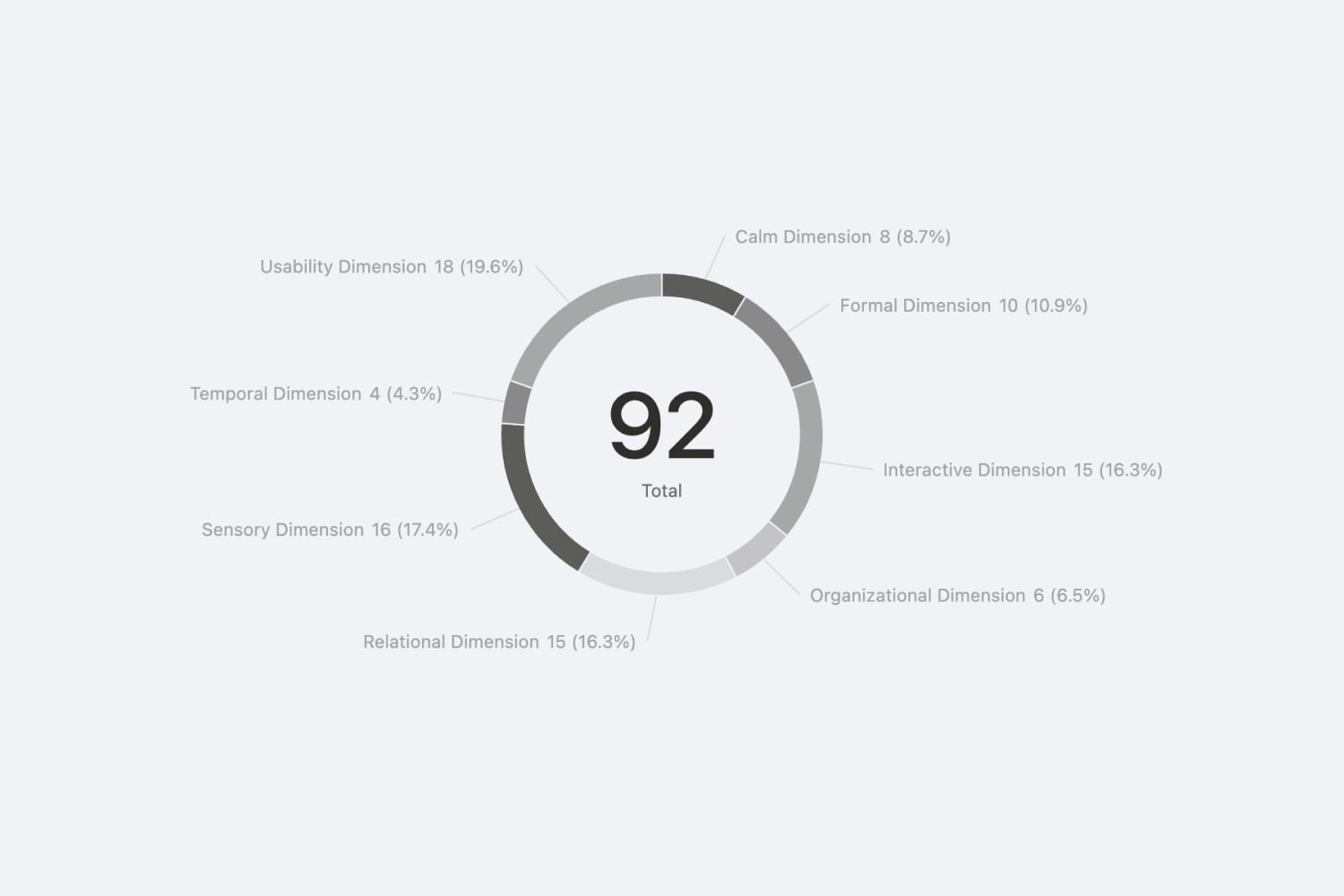
This matrix compiles over 90 analysis criteria, bringing together diverse approaches and complementary disciplines to highlight specific aspects of our artworks
Why It Matters
When we design digital systems, we shape more than interfaces: we shape habits of mind and modes of attention.
Calm Matters takes that responsibility seriously.
Not by adding another layer of functionality, but by returning to the material roots of care and presence.
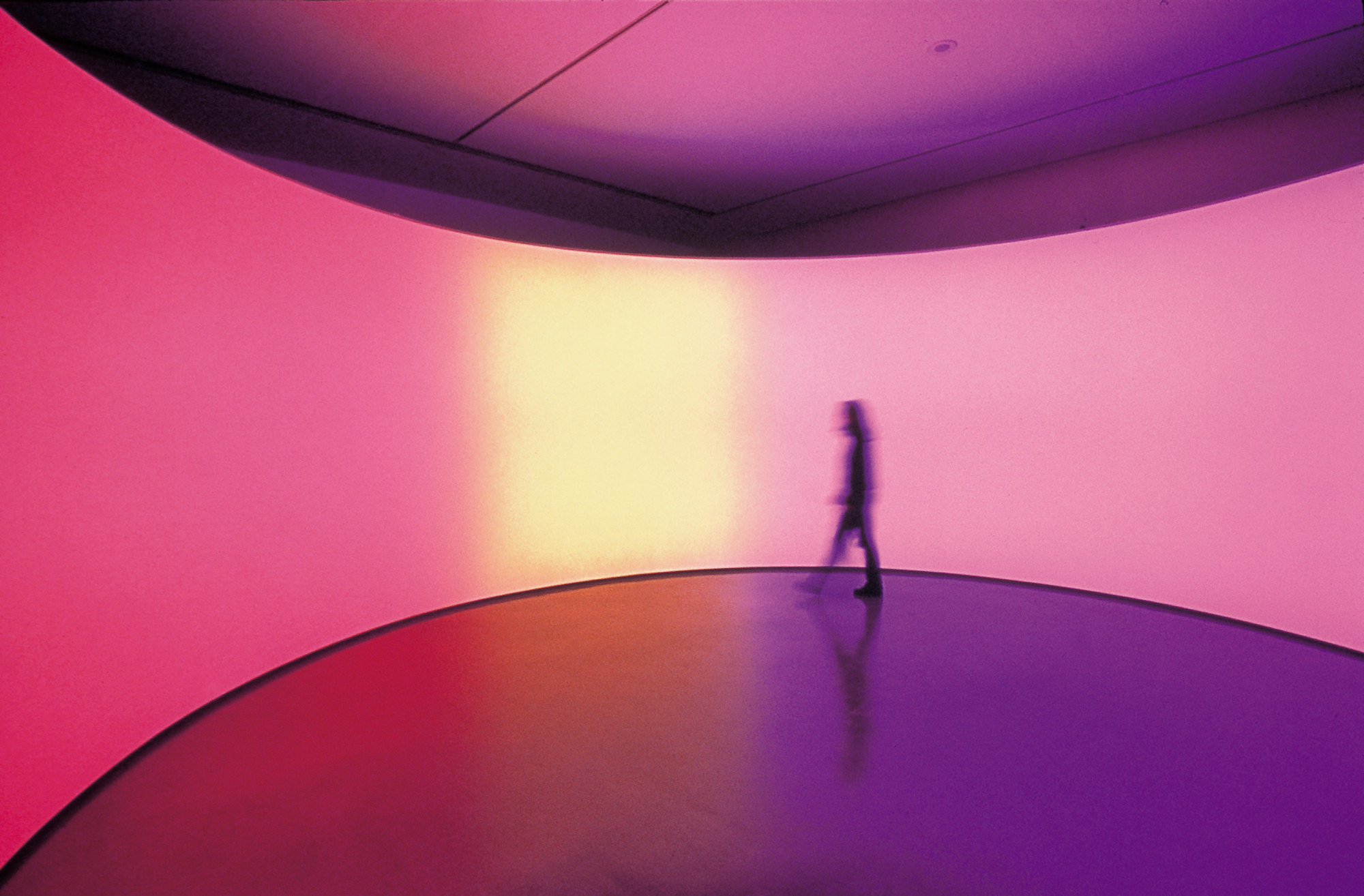
In Take Your Time, Olafur Eliasson turns light, water, stone, and moss into materials of perception, inviting viewers to linger in altered states of awareness. His environments do not depict nature, they recompose it, using geometry, reflection, and sensory phenomena to disrupt and deepen our grasp of the everyday. Light becomes sculptural, time stretches, and space feels momentarily unfamiliar. This material approach, grounded in experience rather than image, aligns with calm design’s call for presence, slowness, and attention. Eliasson’s work reminds us that materials can shift not only what we see but how we feel and how we relate to the world. photo: moma.
Ongoing Work
This is a living inquiry.
We continue to develop the project through writing, workshops, collaborations, and new interaction experiments.
We host speculative labs and research gatherings exploring future technologies rooted in calm, presence, and sensory richness.
Calm Matters isn’t just a study of materiality. It’s a call to rethink how we build our digital worlds, and a step toward design that cares for attention as a shared, fragile resource.
If you’re working on similar questions—around attention, materiality, or calm technologies— we’d love to connect.
